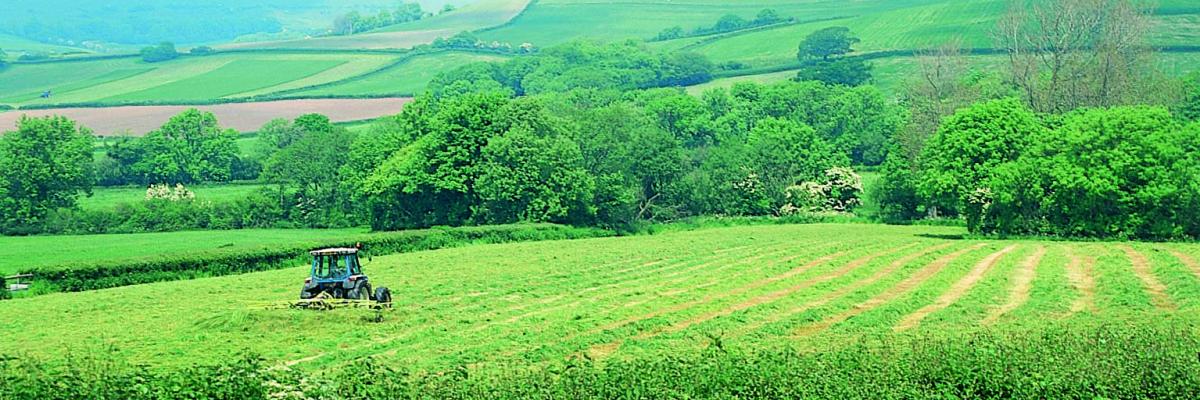
(Photo credit: Soil Association)
Agricology has been established to share practical information about sustainable farming based on agroecological principles. This page aims to provide information about agroecology.
What is agroecology?
Agroecology involves understanding ecological processes and applying these concepts to the design and management of agricultural production systems.
“Agroecology is concerned with the maintenance of a productive agriculture that sustains yields and optimizes the use of local resources while minimizing the negative environmental and socio-economic impacts” (Miguel Altieri).
|
View the video below for a definition of agroecology from one of our featured farmers George Young (farmingGeorge)...
|
Agroecological approaches:
Agroecology is not associated with any one particular method of farming. Approaches to farming that fall under the umbrella of agroecology can include: organic farming, biodynamic farming, agroforestry and permaculture.
Integrated farming and conservation agriculture, also adopt agroecological principles and practices, but may also use external inputs (depending on how the approach is implemented).
Agroecological principles*:
- Promoting recycling of biomass (e.g. plant material and agricultural residues) and optimising nutrient availability;
- Ensuring favourable soil conditions for plant growth, particularly soil organic matter and biota;
- Minimising losses from the agricultural system e.g. through water harvesting, soil and energy management;
- Maximising species and genetic diversity (plants and livestock);
- Enhancing biological interactions and synergies to promote ecological processes and services.
Agroecological management practices*:
- Relying on soil biota, e.g. earthworms, to enhance soil structure and fertility, the formation of water stable aggregates, and soil water infiltration;
- Using legumes and symbiotic N-fixing bacteria to fix biological nitrogen;
- Using biologically active soil amendments (e.g. composts) to suppress soil-borne diseases and enhance soil structure and fertility;
- Practicing passive biological control of pests using field margins or beetle banks to encourage presence of beneficial insects;
- Designing cropping systems to disrupt pest life cycles or attract pests away from sensitive crops (including push-pull systems);
- Using crop rotation to manage soil fertility, weeds, and pests and diseases;
- Using diverse cultivar and species mixtures (including combining crops and livestock), to improve resource use efficiency and reduce the spread of pests and diseases;
- Combining livestock species with different grazing behaviours and ensuring effective resource utilisation to maximise nutrition and health benefits.
- Relying on minimal artificial inputs from outside the farm system.
Common features within agroecological management practices are:
- A strong biological rather than technological focus, with reliance on knowledge, skills and experience for effective management;
- Emphasising the diversity of the farming system and its components, because complex relations between components help to deliver system resilience and stability;
- Aiming for reduced and efficient use of industrial/ technological/synthetic agrochemical inputs through reuse and recycling.
(*taken from ‘The Role of Agroecology in Sustainable Intensification’ report)
More information:
You can find more information about agroecology by following the links below:
- ‘The Role of Agroecology in Sustainable Intensification: Summary’ provides an overview of a longer report based on a study undertaken by the Organic Research Centre with the Game & Wildlife Conservation Trust and outlines the potential contribution of agroecology to sustainability objectives.
- ‘Agroecology: what is it and why we need it’ is a short leaflet produced by the All-Party Parliamentary Group on Agroecology.
- 'Agroecology in Action', is a useful website established by Miguel Altieri, Professor of Agroecology at UC Berkeley. The site includes link to useful information including a new agroecology training manual: ‘Agroecology: Key concepts, principles and practices’.
- ‘Mainstreaming Agroecology: Implications for global food and farming systems’ by the Centre for Agroecology, Water and Resilience, makes the case for agroecology as an underlying paradigm for sustainable agriculture, identifies the barriers to mainstreaming agroecology and highlights priority areas for policy, research and practice.
- ‘Agroecology: what it is and what it has to offer’ by IIED provides information about agroecology from a global perspective, outlines what it can offer and how agroecological practices can be more widely adopted.
